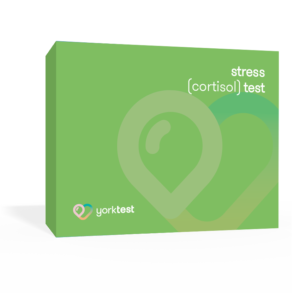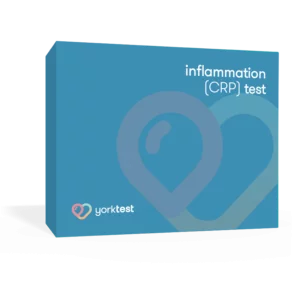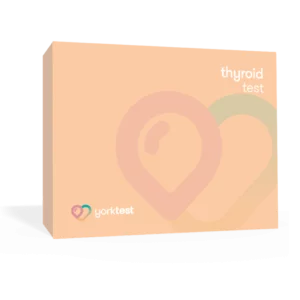- What is Oral Allergy Syndrome (OAS)?
- How Prevalent is Oral Allergy Syndrome?
- Foods to Avoid with Oral Allergy Syndrome
- Birch Pollen
- Grass Pollen
- Ragweed Pollen
- Symptoms of Oral Allergy Syndrome
- Itchy or Tingling Mouth
- Swelling of Lips, Tongue, or Throat
- Skin Reactions
- How Long Does Oral Allergy Syndrome Last?
- Short-term Symptoms
- Long-term Outlook
- How to Test for Oral Allergy Syndrome?
- Skin Prick Tests
- Blood Tests
- Oral Food Challenge
- Oral Allergy Syndrome Treatment & Management
- Avoiding Trigger Foods
- Cooking Alterations
- Sublingual Immunotherapy (SLIT)
- Allergen-Specific Immunotherapy (AIT)
- Bottom Line
Have you ever bitten into an apple, peach, or pear and felt your mouth itch? You might be experiencing symptoms of Oral Allergy Syndrome (OAS), a condition linked to pollen allergies that makes eating certain raw fruits, vegetables, and nuts unbearable.
Oral Allergy Syndrome, which involves localized symptoms around the lips, mouth, and throat, can be difficult to pinpoint. Given the range of potential foods that can cause OAS and the variability of symptoms that arise, people who suffer from this condition often struggle to identify the root cause (as there can be many).
What is Oral Allergy Syndrome (OAS)?
Oral Allergy Syndrome (OAS), also known as pollen-food allergy syndrome (PFAS or PFS), is a particular type of food allergy caused by cross-reactivity to certain proteins in fresh fruits, vegetables, and nuts that are similar to those found in specific pollens.
OAS manifests as an immune response where the body erroneously identifies and mistakes these proteins as harmful invaders. This mix-up can cause itching or tingling in the mouth immediately after eating the offending food.
What’s perplexing about OAS is how different trigger foods are associated with specific pollens, such as birch, grass, or ragweed pollen. The most fascinating part about OAS is its direct link with hay fever allergies. If you’re allergic to birch pollen, for example, you might react to apples since their proteins are similar.
OAS typically flares up during pollen season but can occur year-round depending on what triggers your symptoms and where you live. The reactions are usually mild but can be unsettling nonetheless. Grasping the pollens that trouble you might indicate which foods to steer clear of, preventing a reaction before it arises.
How Prevalent is Oral Allergy Syndrome?
Some studies indicate that the prevalence of OAS is just over 10% based on over 6,800 individuals observed. However, those with existing conditions are even more prone to OAS.[1]
Among children and adults with allergic rhinitis, rates of OAS vary between 26.7% and 50%.[2] The prevalence is even higher (67.4%) for those with pollinosis complications, such as those specifically sensitized to birch pollen.[3]
While the prevalence of OAS can vary due to underdiagnosis, under-reporting, and geographical differences, these figures indicate that OAS is a widely prevalent issue that impacts many people worldwide.
Foods to Avoid with Oral Allergy Syndrome
Oral Allergy Syndrome is a unique type of food allergy characterized by allergic reactions in the mouth following the consumption of certain foods. These reactions occur because the proteins found in some fruits, vegetables, and nuts are similar to those found in certain pollens, leading to cross-reactivity.
Individuals with allergy sensitivities to specific types of pollen may experience OAS upon consuming related foods. To manage symptoms effectively, it’s crucial to identify and avoid these trigger foods.
Keep in mind that some foods overlap into different pollen types, so if you’re sensitive to one particular pollen (like birch pollen) you may be sensitive to another (ragweed pollen). This is why some individuals who experience allergic reactions to apples may also experience a cross-reaction to carrots.
Birch Pollen
Individuals sensitive to birch pollen might notice oral discomfort when consuming:
- Apples
- Pears
- Peaches
- Plums
- Kiwis
- Carrots
- Celery
- Almonds
These fruits and vegetables share protein structures similar to those found in birch pollen, potentially provoking an OAS reaction.
Grass Pollen
For those allergic to grass pollens, several fruits, vegetables, grains, and legumes can exacerbate symptoms:
- Melons
- Tomatoes
- Oranges
- Swiss chard
- Peanuts
- Soy
- Lentils
- Wheat
Such items bear proteins that mirror those present in grass pollen which could lead individuals susceptible to experiencing tingling or itching sensations around their mouths after ingestion.
Ragweed Pollen
Ragweed pollen allergies are notably triggered by a distinct set of produce including:
- Bananas
- Apple
- Peaches
- Melons
- Carrot
- Green Pepper
- Celery
- Onion
- Fennel
- Parsnip
This group possesses allergenic proteins akin to ragweed’s profile. In turn, eating them can elicit adverse responses among affected people.
Understanding your specific allergy triggers allows for better management through dietary adjustments. If you suspect having Oral Allergy Syndrome or have been diagnosed with it but aren’t sure about your exact triggers—consulting an allergist or qualified healthcare provider is essential for tailored advice.
Additionally, cooking or peeling these foods might reduce symptom severity since heat alters the structure of problematic proteins while peeling removes them from surfaces where these allergenic proteins are most concentrated.
Symptoms of Oral Allergy Syndrome
OAS most commonly triggers an allergic reaction that manifests around the oral cavity, such as the mouth and lips. Grasping the signs and symptoms of OAS is vital to helping you navigate your condition more adeptly.
Itchy or Tingling Mouth
The most common symptom people experience with OAS is sudden itchiness or tingling in the mouth after eating raw fruits or vegetables. This sensation typically starts within minutes of exposure to the allergen.
In more severe cases, this itching might extend to the throat and even ears. Although it can be unsettling, these sensations are usually short-lived and mild.
Swelling of Lips, Tongue, or Throat
Another tell-tale sign of OAS is swelling around the lips or tongue soon after consuming trigger foods. In some instances, individuals may notice their throat feels tight which could interfere with breathing if not addressed quickly.
In rare cases, the swelling can become serious enough to seek immediate medical attention although this extreme response is uncommon for those suffering from OAS alone.
Skin Reactions
While less frequent than oral symptoms, some people develop rashes on their skin after contact with food triggers. These rashes often appear as red, itchy welts that are similar to other types of allergic reactions.
Because these symptoms mirror other conditions, such as eczema, they’re sometimes overlooked as signs of OAS. However, noting when they occur relative to meals can provide clues for diagnosis.
How Long Does Oral Allergy Syndrome Last?
Oral Allergy Syndrome can be as fleeting as a spring breeze or linger like the last leaves of autumn. The length of time one might experience OAS fluctuates greatly, often swayed by elements like the concentration of pollen in the air and what they’ve eaten. How long OAS lasts can be examined in two ways:
Short-term Symptoms
The immediate symptoms of OAS typically develop within minutes after eating the offending fruit or vegetable. These reactions are generally short-lived, often subsiding on their own without treatment in less than an hour. For some, relief comes even more swiftly, with discomfort easing within moments once exposure to the trigger stops.
To manage these acute episodes effectively, avoiding known triggers is key. By actively dodging allergens, we not only lessen the chances of bumping into them but also decrease how often our bodies react negatively.
Long-term Outlook
OAS isn’t necessarily a lifelong companion for everyone who experiences it. Its persistence largely depends on underlying seasonal allergies—specifically to pollens that cross-react with certain foods.
In cases where individuals see an improvement in their pollen allergies through targeted treatments or natural tolerance development over time, they may also notice a decrease in OAS severity or frequency. Some studies suggest that effective management of hay fever could lessen oral allergy symptoms since both conditions are linked by common allergic pathways.[4]
However, there’s no one-size-fits-all answer when it comes to outgrowing OAS entirely; each person’s immune response evolves differently. According to experts, maintaining open communication with healthcare providers about changes in allergy patterns is essential for adapting management strategies over time.
How to Test for Oral Allergy Syndrome?
If you think you might have Oral Allergy Syndrome, the first step is getting a proper diagnosis. Feeling overwhelmed at the thought of testing for Oral Allergy Syndrome is natural, yet understanding your options for diagnosis can significantly ease this journey. Here’s how testing for OAS is typically carried out.
Skin Prick Tests
A common method used to identify potential allergies is the skin prick test. During this test, small amounts of suspected allergens are placed on your skin, usually on the forearm or back. The skin is then lightly pricked so the allergen goes under the surface of the skin. If you’re allergic to any of these substances, a raised bump similar to a mosquito bite will appear at one or more of the sites within 20 minutes.
Blood Tests
Blood tests may also be conducted alongside or instead of skin prick tests. These involve analyzing your blood for specific antibodies that fight against allergens associated with OAS like certain pollens and raw fruits or vegetables. It measures levels of Immunoglobulin E (IgE) antibodies in your blood which could indicate an allergy.
Oral Food Challenge
In some cases, an oral food challenge might be suggested by your doctor if initial testing remains inconclusive. Under close medical supervision, you’ll consume gradually increasing amounts of the suspect food until symptoms appear. By undergoing this specific test, one can conclusively determine if the suspected food is indeed causing Oral Allergy Syndrome symptoms.
Diving deeper into understanding requires consulting with a specialist. Armed with accurate information from such diagnostic approaches helps pave the way towards managing reactions effectively and maintaining a better quality of life despite having OAS.
YorkTest is an invaluable ally in helping individuals understand their food allergy and sensitivity conditions by offering at-home test kits. These tests can be carried out at home and mailed back to YorkTest’s lab for analysis. The results are easy to read, and you can also book a nutritional consultation to help you better manage your condition.
Oral Allergy Syndrome Treatment & Management
If you’re experiencing the challenges that come with Oral Allergy Syndrome, knowing your treatment options can make a world of difference. While there’s no universal remedy to cure OAS, various treatments and management strategies offer a beacon of hope in enhancing one’s life with this condition.
Avoiding Trigger Foods
The most straightforward approach to managing OAS is avoiding foods that trigger reactions. This might seem daunting at first, but with careful observation and maybe keeping a food diary, you’ll get better at spotting problem foods. Seeking advice from an allergist or nutrition expert well-versed in OAS can greatly assist in pinpointing the culprits behind your reactions.
Cooking Alterations
Heat alters the proteins in fruits and vegetables that typically cause OAS reactions. So, cooking raw fruits and veggies before eating them could prevent symptoms from flaring up. Think steaming apples or baking carrots—simple tweaks that could let you enjoy your favorites without discomfort.
Sublingual Immunotherapy (SLIT)
In some cases, doctors may recommend Sublingual Immunotherapy—a form of allergy treatment where small doses of an allergen are placed under the tongue to increase tolerance over time, under the supervision of a healthcare provider. Research has shown SLIT to be effective for certain pollen allergies related to OAS.[5]
Allergen-Specific Immunotherapy (AIT)
Allergen-specific immunotherapy involves gradually exposing your body to larger amounts of an allergen through injections or sublingually over months or even years, under the supervision of a healthcare provider. This method aims not just to ease but potentially eliminate allergic responses.
Bottom Line
Managing Oral Allergy Syndrome effectively hinges on recognizing and avoiding the foods that trigger symptoms. By understanding the relationship between specific pollens—such as birch, grass, and ragweed—and their corresponding food triggers, individuals can tailor their diets to minimize discomfort.
Although this might necessitate some dietary adjustments, it’s a proactive step toward mitigating oral allergy reactions. Remember: testing for OAS and consulting with an allergist or qualified healthcare provider for personalized advice is paramount in navigating OAS successfully. With informed choices and perhaps minor alterations to your eating habits, you can enjoy meals without the worry of adverse allergic responses.
Scientific References:
1. Osawa Y, Ito Y, Takahashi N, Sugimoto C, Kohno Y, Mori S, Morikawa T, Kato Y, Okamoto M, Kanno M, Takabayashi T, Fujieda S. Epidemiological study of oral allergy syndrome in birch pollen dispersal-free regions. Allergol Int. 2020 Apr;69(2):246-252. doi: 10.1016/j.alit.2019.09.008. Epub 2019 Nov 7. PMID: 31708436.
2. Zhang Md Y, Marzouk Md H. Otolaryngologists Practice Pattern on Oral Allergy Syndrome. Allergy Rhinol (Providence). 2021 May 28;12:21526567211021305. doi: 10.1177/21526567211021305. PMID: 34104535; PMCID: PMC8165865.
3, 4. Sussman G, Sussman A, Sussman D. Oral allergy syndrome. CMAJ. 2010 Aug 10;182(11):1210-1. doi: 10.1503/cmaj.090314. Epub 2010 Jun 21. PMID: 20566728; PMCID: PMC2917934.
5. Bergmann KC, Wolf H, Schnitker J. Effect of pollen-specific sublingual immunotherapy on oral allergy syndrome: an observational study. World Allergy Organ J. 2008 May;1(5):79-84. doi: 10.1097/WOX.0b013e3181752d1c. PMID: 23282323; PMCID: PMC3650975.













